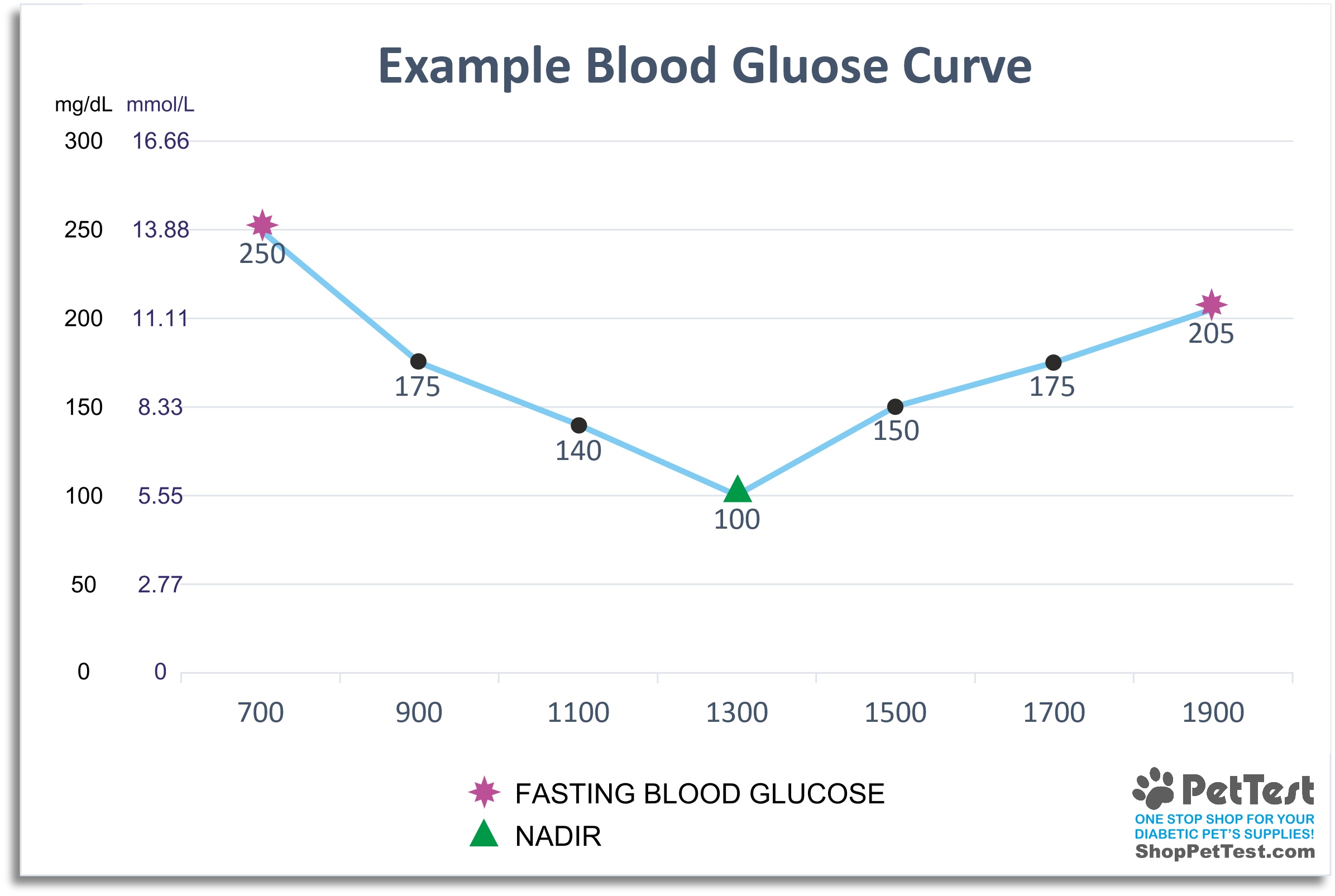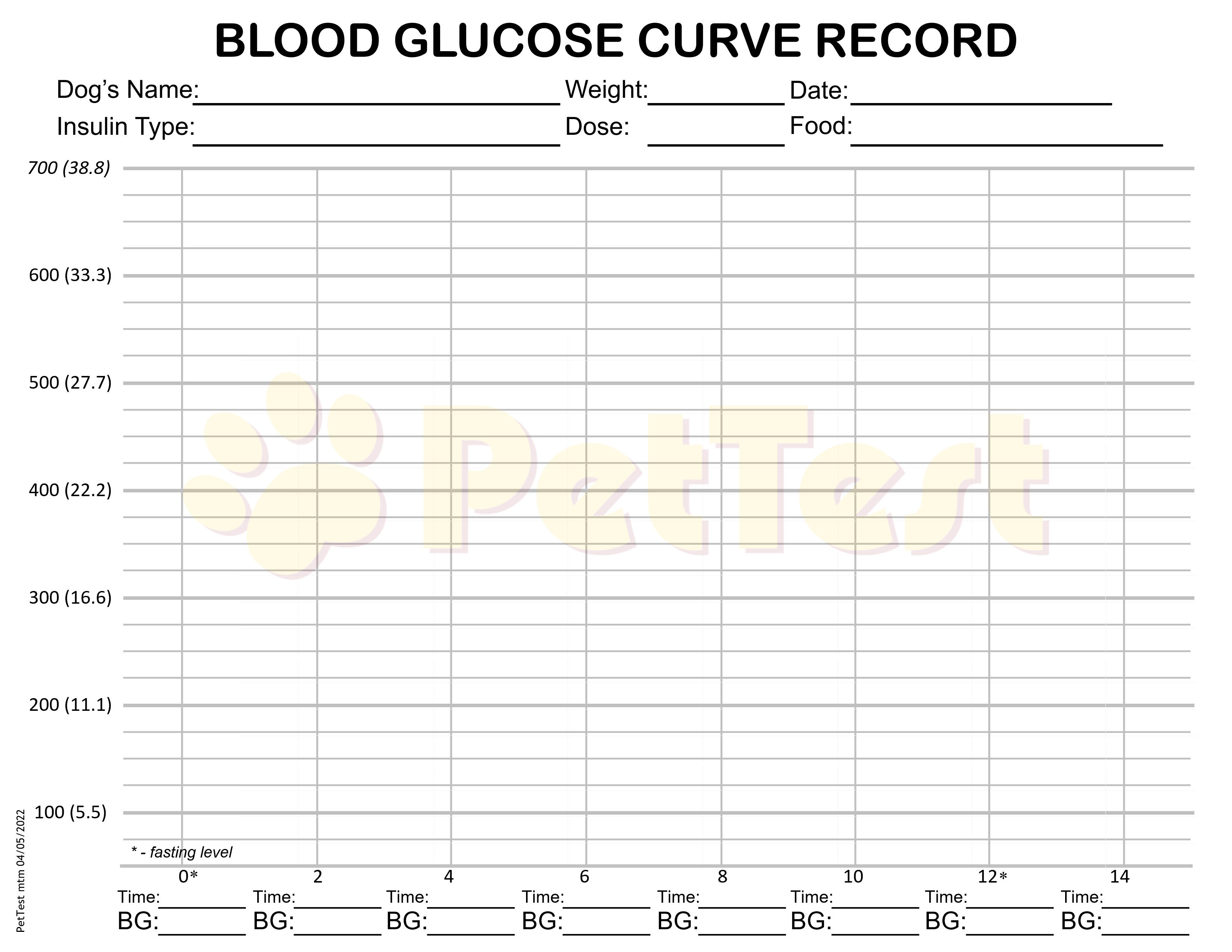Curve Day! How and Why We Need to Perform Blood Glucose Curves
You may have read my blog Managing Canine Diabetes on a Budget and learned of tips to help save money when caring for your diabetic dog. After Lucy was diagnosed with diabetes the vet performed two blood glucose curves: each curve cost $173.00 back in 2015! This was just too expensive and I was testing blood glucose levels at home soon after diagnosis, so I decided to run blood glucose curves at home. I also did not like the fact that Lucy was in a kennel all day long at the vet’s office (even though she loved her vet and the staff), not to mention the amount of stress she was under while at the vets for the day. My vet was extremely supportive and 100% on board with me running curves and then emailing the results. He would go over the curve results and then call me with advice and recommendations.
Today I want to go over exactly what a blood glucose curve is, why we should run blood glucose curves at home and how to run a curve.
What is a blood glucose curve?
A blood glucose curve shows us how insulin and food are working together. When blood glucose readings are gathered over a period of twelve hours we can plot the finished curve to see:
- How food and insulin are working together.
- Whether or not insulin adjustments need to be made.
- What type of curve our dog is.
- What the lowest reading or nadir is.
- Stressors that affect blood glucose levels.
Why perform blood glucose curves at home?
Blood glucose curves run at home are more accurate than when they are run at the vet’s office. Stress skews blood glucose and this has been proven over and over.
When performing a curve at home we get a full twelve-hour curve compared to a curve run at the vet’s office.
The amount of money saved by running a blood glucose curve at home can be staggering. It is recommended that a curve be run every seven to ten days until target goal is reached. Getting to target blood glucose levels can take months since there are so many other factors that come into play with blood glucose (for example: food or other illnesses like Cushing’s Disease). Vets on board with home testing blood glucose levels should work with you and allow curve results to be emailed to them for analysis and advice. Even if your vet charges for a consultation, it is going to be less than if a blood glucose curve is performed at the vets.
For example: It took seven months for me to get Lucy to a target level of 100 – 250 mg/dL (5.55 – 13.88 mmol/L) and my vet charged $173.00 per curve. If Lucy had gone to vet’s office every other week for a curve, it would have cost around $2,400.00.
The other thing not often mentioned is the bond that grows between you and your diabetic dog. Testing blood glucose is a learning process for both you and your sweet pup. All the praise, guilt free treats after a reading and loves that we give them after testing grows that bond that we already have with them even more.
Interesting fact: cats get stress hyperglycemia so easily and readings are so skewed that to diagnose diabetes mellitus the AAHA recommends running a fructosamine test. They also recommend running curves at home since kitty’s blood glucose levels will be inflated at the vet’s office.
How do I perform a blood glucose curve?
Blood glucose curves are simple to run! You will need supplies to test blood glucose and you need to carve out twelve hours to run the curve.
To run a curve:
- Test blood glucose at fasting (before food and insulin)
- Feed
- Inject insulin if blood glucose is over 200 mg/dL (11.11 mmol/L)
- Test every two hours until next fasting
- VOILA! CURVE PERFORMED!
You can plot your curve by using this handy chart that can be printed for future use. PetTest also has a fabulous app, the Digital Companion App that you can download on your mobile device! For more information click here!
What does all this mean?
Interpreting blood glucose curves can be confusing and can take some time to get down. Your vet should know to interpret a curve but let’s quickly go over some key points that are important.
Lowest reading or NADIR – Lowest reading or the nadir in a curve is extremely important. Nadir tells us whether we can increase insulin or not.
Type of curve – not every dog is alike, there are several types of insulin and foods fed, metabolism and other diseases/illnesses that affect how insulin works. There are bowl, mountain, flat and a couple more that we see. For more information on types of curves, here is a blog explaining different curves.
Stressors that affect blood glucose – this is important to know, especially if you exercise Fido and exercise drops blood glucose levels. By knowing how stress affects your dog you have the ability to act appropriately ahead of time. For instance: you walk your dog once a day for 20 minutes and the curve shows that blood glucose levels drop to near hypoglycemic levels. Since you know this you pretreat for hypoglycemia.

Now that you know what a blood glucose curve is and why you should perform them at home, pick a day you will be home and make sure you have all your supplies ready! If you need suggestions on how to get a good blood sample, click here. Supplies necessary for BG curves are listed below.
Until next week stay comfy and caffeinated!
If you have any questions, comments or suggestions, please start a conversation below.
If you are looking for a Facebook community to join for support, I have proudly been an admin in Diabetic Dog Owners for over five years. You can also join Canine Diabetes Support and Information on Facebook as well.
Be sure to join the PetTest family on Facebook and Instagram. PetTest has fun, interactive posts AND they have fabulous giveaways every week!
PetTest Meter Kit - https://shoppettest.com/pettest-meter-kit/
PetTest Test Strips - https://shoppettest.com/pettest-strips-50-ct/
PetTest 21-gauge Safety Lancets - https://shoppettest.com/safety-lancets-21g/
PetTest 21-gauge Twist-top Lancets - https://shoppettest.com/pettest-twist-top-lancets/
PetTest Genteel Painless Lancing Device - https://shoppettest.com/genteel-lancing-device/
For a printable version of this blog click here.


